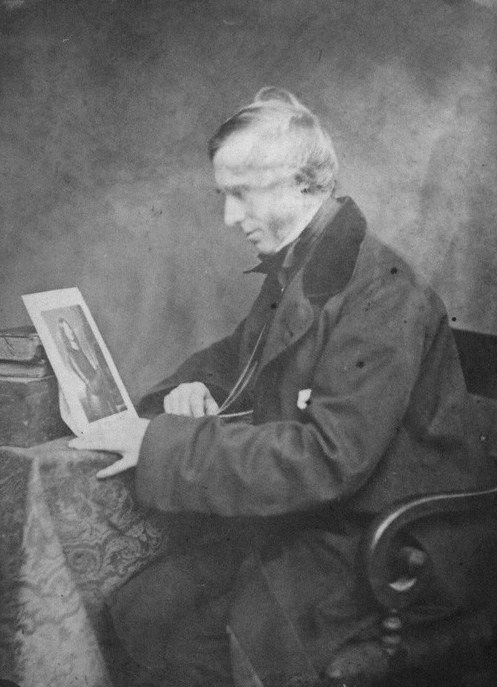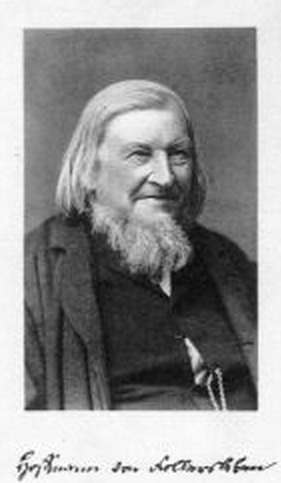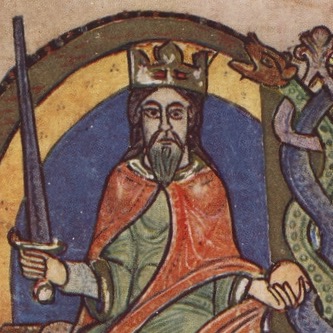|
Mark Napier (historian)
Mark Napier (24 July 1798 – 23 November 1879) was a Scottish lawyer, biographer and historical author. He was called to the Bar, practised as an advocate, and was made Sheriff of Dumfries and Galloway. Napier wrote from a strongly Cavalier and Jacobite standpoint. He published Memoirs of the Napiers, of Montrose, and of Graham of Claverhouse, the last of which gave rise to controversy. Napier was a member of the Edinburgh Calotype Club and the Photographic Society of Scotland. Founded in 1843 the club is one of the world's first photographic clubs. Life Born on 24 July 1798, he was descended from the Napiers of Merchiston. His great-grandfather Francis Napier, 6th Lord Napier had five sons, of whom the youngest, Mark, a major-general in the army, was the grandfather of the biographer. His father was Francis Napier, a writer to the signet in Edinburgh, and his mother was Mary Elizabeth Jane Douglas, eldest daughter of Colonel Archibald Hamilton of Innerwick, Haddingtonshi ... [...More Info...] [...Related Items...] OR: [Wikipedia] [Google] [Baidu] |
Dumfries
Dumfries ( ; sco, Dumfries; from gd, Dùn Phris ) is a market town and former royal burgh within the Dumfries and Galloway council area of Scotland. It is located near the mouth of the River Nith into the Solway Firth about by road from the Anglo-Scottish border and just away from Cumbria by air. Dumfries is the county town of the historic county of Dumfriesshire. Before becoming King of Scots, Robert the Bruce killed his rival the Red Comyn at Greyfriars Kirk in the town on 10 February 1306. The Young Pretender had his headquarters here during a 3-day sojourn in Dumfries towards the end of 1745. During the Second World War, the bulk of the Norwegian Army during their years in exile in Britain consisted of a brigade in Dumfries. Dumfries is nicknamed ''Queen of the South''. This is also the name of the town's professional football club. People from Dumfries are known colloquially in Scots language as ''Doonhamers''. Toponymy There are a number of theories ... [...More Info...] [...Related Items...] OR: [Wikipedia] [Google] [Baidu] |
University Of Edinburgh
The University of Edinburgh ( sco, University o Edinburgh, gd, Oilthigh Dhùn Èideann; abbreviated as ''Edin.'' in post-nominals) is a public research university based in Edinburgh, Scotland. Granted a royal charter by King James VI in 1582 and officially opened in 1583, it is one of Scotland's four ancient universities and the sixth-oldest university in continuous operation in the English-speaking world. The university played an important role in Edinburgh becoming a chief intellectual centre during the Scottish Enlightenment and contributed to the city being nicknamed the "Athens of the North." Edinburgh is ranked among the top universities in the United Kingdom and the world. Edinburgh is a member of several associations of research-intensive universities, including the Coimbra Group, League of European Research Universities, Russell Group, Una Europa, and Universitas 21. In the fiscal year ending 31 July 2021, it had a total income of £1.176 billion, of w ... [...More Info...] [...Related Items...] OR: [Wikipedia] [Google] [Baidu] |
1798 Births
Events January–June * January – Eli Whitney contracts with the U.S. federal government for 10,000 muskets, which he produces with interchangeable parts. * January 4 – Constantine Hangerli enters Bucharest, as Prince of Wallachia. * January 22 – A coup d'état is staged in the Netherlands ( Batavian Republic). Unitarian Democrat Pieter Vreede ends the power of the parliament (with a conservative-moderate majority). * February 10 – The Pope is taken captive, and the Papacy is removed from power, by French General Louis-Alexandre Berthier. * February 15 – U.S. Representative Roger Griswold (Fed-CT) beats Congressman Matthew Lyon (Dem-Rep-VT) with a cane after the House declines to censure Lyon earlier spitting in Griswold's face; the House declines to discipline either man.''Harper's Encyclopaedia of United States History from 458 A. D. to 1909'', ed. by Benson John Lossing and, Woodrow Wilson (Harper & Brothers, 1910) p171 * March ... [...More Info...] [...Related Items...] OR: [Wikipedia] [Google] [Baidu] |
Bannatyne Club
The Bannatyne Club, named in honour of George Bannatyne and his famous anthology of Scots literature the Bannatyne Manuscript, was a text publication society founded by Sir Walter Scott to print rare works of Scottish interest, whether in history, poetry, or general literature. The club was established in 1823 and printed 116 volumes before being dissolved in 1861. Membership Membership in the Bannatyne Club was much more diverse than that found in more elite clubs such as the Roxburghe Club, including members from the publishing and printing trades in addition to lawyers. While the club was still elite, contributions by amateurs was considered valuable. This made the Bannaytne club a transitional organization between the elitism of previous clubs and the open policy of its successors. Like many Gentlemen's club's of the 18th and 19th centuries, the Bannatyne Club allowed members engage in homosocial relations and escape from constrictions associated with class, gender, and rac ... [...More Info...] [...Related Items...] OR: [Wikipedia] [Google] [Baidu] |
John Spotiswood
John Spottiswoode (Spottiswood, Spotiswood, Spotiswoode or Spotswood) (1565 – 26 November 1639) was an Archbishop of St Andrews, Primate of All Scotland, Lord Chancellor, and historian of Scotland. Life He was born in 1565 at Greenbank in Mid Calder, West Lothian, Scotland, the eldest son of John Spottiswood, minister of Calder and superintendent of Lothian. He was educated at the University of Glasgow (MA 1581), and succeeded his father in the parish of Calder in 1583. In 1601 he attended Ludowick, Duke of Lennox, as his chaplain, in an embassy to the court of France, returning in 1603. He followed James VI and I to England on his accession at the Union of the Crowns. He was sent back to Scotland to attend Anne of Denmark as her almoner or "elemosynar". In the same year he was nominated to the see of Glasgow, his consecration in London, however, not taking place until October 1610. Spottiswoode had originally become prominent as an ardent supporter of the strict Presbyter ... [...More Info...] [...Related Items...] OR: [Wikipedia] [Google] [Baidu] |
Wigtown Martyrs
The Wigtown Martyrs or Solway Martyrs, Margaret Maclauchlan and Margaret Wilson, were Scottish Covenanters who were executed by Scottish Episcopalians on 11 May, 1685 in Wigtown, Scotland, by tying them to stakes on the town's mudflats and allowing them to drown with the rising tide. Monuments to the 'Wigtown Martyrs' exist in Wigtown. During " The Killing Times" of the Covenanters in the 17th century, Margaret McLachlan, an elderly woman of around 63, and Margaret Wilson, around 18 years of age, were sentenced to be tied to stakes in the tidal channel of the River Bladnoch near its entrance to Wigtown Bay to be drowned by the incoming tide. The ploy was that the younger woman might be persuaded to change her mind after watching the older woman drown. The strategy failed and both died. This execution was carried out by dragoons under the command of Major Windram in the presence of Sir Robert Grierson of Lag who held the King's Commission to suppress the rebels in the South West. ... [...More Info...] [...Related Items...] OR: [Wikipedia] [Google] [Baidu] |
Margaret Wilson (Scottish Martyr)
Margaret Wilson (c. 1667 – 11 May 1685) was a young Scottish Covenanter from Wigtown in Scotland who was executed by drowning for refusing to swear an oath declaring James VII of Scotland ( James II of England) as head of the church. She died along with Margaret McLachlan. The two Margarets were known as the Wigtown Martyrs. Wilson became the more famous of the two because of her youth. As a teenager, her faith unto death became celebrated as part of the martyrology of Presbyterian churches. Background and arrest The Covenanter movement to maintain the reforms of the Scottish Reformation came to the fore with signing of the National Covenant of 1638 in opposition to royal control of the church, promoting Presbyterianism as a form of church government instead of an Episcopal polity governed by bishops appointed by the Crown. The dispute led to the Wars of the Three Kingdoms and the overthrow of the monarchy. With the Restoration of the monarchy in 1660 the Covenants were decl ... [...More Info...] [...Related Items...] OR: [Wikipedia] [Google] [Baidu] |
John Graham, 1st Viscount Dundee
John Graham, 7th of Claverhouse, 1st Viscount Dundee (21 July 1648 – 27 July 1689) was a Scottish soldier and nobleman, a Tory and an Episcopalian. He was responsible for policing southwest Scotland during and after the religious unrest and rebellion of the late 17th century, and went on to lead the Jacobite rising of 1689. After his death, Presbyterian historians dubbed him "Bluidy Clavers". Contemporary evidence for the fairness of this soubriquet in the Covenanting tradition is mixed. Tales of the Covenanters and Covenanter monuments hold Claverhouse directly responsible for the deaths of adherents of that movement. However, Claverhouse's own letters frequently recommended lenient treatment of Covenanters,Letters of John Grahame of Claverhouse, Viscount of Dundee – James Bannatyne, Edinburgh (1824) and in 1684 he married into a prominent Covenanter family. Later, as a general in the Scottish army, Claverhouse remained loyal to King James VII of Scotland after the Rev ... [...More Info...] [...Related Items...] OR: [Wikipedia] [Google] [Baidu] |
Maitland Club
The Maitland Club was a Scottish historical and literary club and text publication society, modelled on the Roxburghe Club and the Bannatyne Club. It took its name from Sir Richard Maitland (later Lord Lethington), the Scottish poet. The club was founded in Glasgow in 1828, to edit and publish early Scottish texts. Since the distribution of the publications was usually limited to members, the typical print run was between seventy and a hundred copies. The club was wound up in 1859, after publishing its own history as its 80th volume. The later Hunterian Club modelled themselves on the Maitland Club. Presidents * The Earl of Glasgow (around 1835) Notable members * Sir Michael Shaw-Stewart, 7th Baronet * Robert Pitcairn * Prince Augustus Frederick, Duke of Sussex * John Campbell, 7th Duke of Argyll * Walter Montagu Douglas Scott, 5th Duke of Buccleuch * John Crichton-Stuart, 2nd Marquess of Bute * Henry Cockburn, Lord Cockburn * Sir David Hunter-Blair, 3rd Baronet * Sir Thomas Mak ... [...More Info...] [...Related Items...] OR: [Wikipedia] [Google] [Baidu] |
James Graham, 1st Marquess Of Montrose
James Graham, 1st Marquess of Montrose (1612 – 21 May 1650) was a Scottish nobleman, poet and soldier, lord lieutenant and later viceroy and captain general of Scotland. Montrose initially joined the Covenanters in the Wars of the Three Kingdoms, but subsequently supported King Charles I as the English Civil War developed. From 1644 to 1646, and again in 1650, he fought in the civil war in Scotland on behalf of the King. He is referred to as the Great Montrose. Following his defeat and capture at the Battle of Carbisdale, Montrose was tried by the Scottish Parliament and sentenced to death by hanging, followed by beheading and quartering. After the Restoration, Charles II paid £802 sterling for a lavish funeral in 1661, when Montrose's reputation changed from traitor or martyr to a romantic hero and subject of works by Walter Scott and John Buchan. His spectacular victories, which took his opponents by surprise, are remembered in military history for their ... [...More Info...] [...Related Items...] OR: [Wikipedia] [Google] [Baidu] |
John Napier Of Merchiston
John Napier of Merchiston (; 1 February 1550 – 4 April 1617), nicknamed Marvellous Merchiston, was a Scottish landowner known as a mathematician, physicist, and astronomer. He was the 8th Laird of Merchiston. His Latinized name was Ioannes Neper. John Napier is best known as the discoverer of logarithms. He also invented the so-called "Napier's bones" and made common the use of the decimal point in arithmetic and mathematics. Napier's birthplace, Merchiston Tower in Edinburgh, is now part of the facilities of Edinburgh Napier University. There is a memorial to him at St Cuthbert's at the west side of Edinburgh. Life Napier's father was Sir Archibald Napier of Merchiston Castle, and his mother was Janet Bothwell, daughter of the politician and judge Francis Bothwell, and a sister of Adam Bothwell who became the Bishop of Orkney. Archibald Napier was 16 years old when John Napier was born. There are no records of Napier's early education, but many believe that he was p ... [...More Info...] [...Related Items...] OR: [Wikipedia] [Google] [Baidu] |
St Cuthbert's Church, Edinburgh
The Parish Church of St Cuthbert is a parish church of the Church of Scotland in central Edinburgh. Probably founded in the 7th century, the church once covered an extensive parish around the burgh of Edinburgh. The church's current building was designed by Hippolyte Blanc and completed in 1894. St Cuthbert's is situated within a large churchyard that bounds Princes Street Gardens and Lothian Road. A church was probably founded on this site during or shortly after the life of Cuthbert. The church is first recorded in 1128, when David I granted it to Holyrood Abbey. At that time, the church covered an extensive parish, which was gradually reduced until the 20th century by the erection and expansion of other parishes, many of which were founded as chapels of ease of St Cuthbert's. St Cuthbert's became a Protestant church at the Scottish Reformation in 1560: from after the Reformation until the 19th century, the church was usually called the West Kirk. After the Restoration in 1660, ... [...More Info...] [...Related Items...] OR: [Wikipedia] [Google] [Baidu] |




.jpg)

_by_Sir_George_Reid_-_Sir_George_Reid_-_ABDAG003965.jpg)

